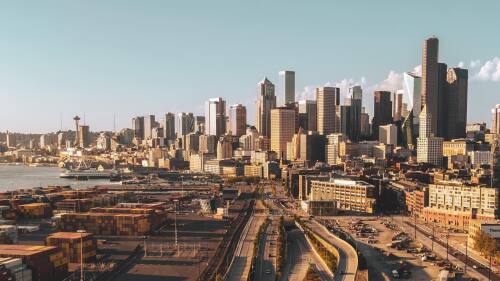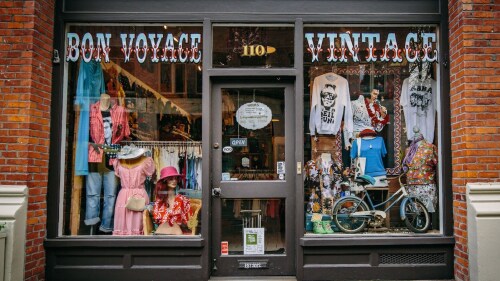Did you know that the starry sky in Seattle is incredibly unique? Seriously, no two places in the world have the same view of the stars — talk about local.
The thing is, it’s likely you’ve never gotten to fully appreciate the night sky. For example, if you live downtown, you probably won’t see:
- Zodiacal lights, the cone of light above sunrise + sunset points
- Meteor showers, like the Lyrids tonight or the Perseids in August.
- The Milky Way, visible as a yellow-orange band of light in the night sky.
In fact, we’re betting the sky at night is light gray or orange (maybe even more so on those overcast nights), and bright enough to read by. So, are we psychic? Well, maybe — but these are all effects of light pollution.
Light?!
Light. You may not think of light as a pollutant, but 724,305 people all pointing lights into the night sky can have a serious effect on natural cycles that rely on light + the stars. Think:
- Birds that pathfind using constellations
- Insects attracted to light (like a moth to a flame, you could say)
- Plants that use light to know when to grow + shed leaves
- All creatures (even humans) that rely on day-night cycles for sleep
Even setting aside the ecosystem, it’s hard to argue with the view. (For reference, our entire metro area is an 8-9 on the Bortle scale.)
Here’s something you won’t expect…
This is really good news. Of all the pollution that feels out of our control, light pollution is actually completely reversible. The International Dark Sky Association has resources to help you use artificial light conscientiously — and with International Dark Sky Week from April 22-30, it’s the perfect time to jump in. Here’s some tips to get you started:
- Swap harsh, unshielded lights with downward-pointing LEDs in a warm color.
- Consider what needs to be lit, and how much.
- Support local light pollution policy.
- Cure your FOMO by joining the Seattle Astronomical Society and attending one of their Star Parties or by checking out one of these talks at the Jacobsen Observatory.











